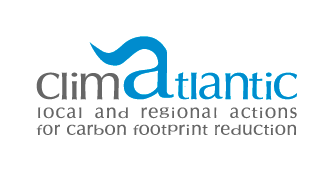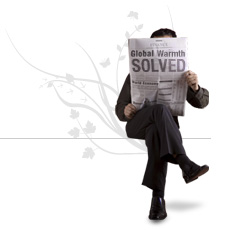NEWS & EVENTS : GENERAL INFORMATION

Many Europeans still exposed to harmful air pollutants
09.28.2012
Almost a third of Europe's city dwellers are exposed to excessive concentrations of airborne particulate matter (PM). Particulate matter is one of the most important pollutants in terms of harm to human health as it penetrates sensitive parts of the respiratory system.
climatlantic //
The EU has made progress over the past decades to reduce the air pollutants which cause acidification, but a new report published today by the European Environment Agency (EEA) shows that many parts of Europe have persistent problems with outdoor concentrations of PM and ground level ozone.
Environment Commissioner Janez PotoÄŤnik said: “This report is a timely reminder of how important air quality is to the health of our citizens. This is why I want 2013 to be the Year of Air and why I will focus on strengthening our air quality laws to tackle the problems identified today.”
Professor Jacqueline McGlade, EEA Executive Director, said: "European Union policy has reduced emissions of many pollutants over the last decade, but we can go further. In many countries, air pollutant concentrations are still above the legal and recommended limits that are set to protect the health of European citizens. In fact, air pollution reduces human life expectancy by around two years in the most polluted cities and regions.”
The EEA’s ‘Air quality in Europe — 2012 report’ examines citizens’ exposure to air pollutants and provides a snapshot of air quality in Europe. The report is intended to support the development of more effective clean air policies.
Key findings
• Particulate matter (PM) is the most serious air pollution health risk in the EU, leading to premature mortality. The report estimates that in 2010, 21 % of the urban population was exposed to PM10 concentration levels higher than the most stringent, daily, EU limit value designed to safeguard health. Up to 30 % of the urban population was exposed to finer PM2.5 concentration levels above the (less stringent) yearly EU limit values. According to the WHO reference levels, which are even tighter than those imposed by EU law, respectively up to 81 % and 95 % of urban dwellers were exposed to PM concentrations that exceed the reference values set for the protection of human health – underlining the urgency of the coming review of air legislation.
• Ozone (O3) can cause respiratory health problems and lead to premature mortality. Exposure in cities is very high – 97 % of EU urban inhabitants were exposed to O3 concentrations above the WHO reference level in 2010. 17 % were exposed to concentrations above the EU target value for O3. In 2009, 22 % of arable land in Europe was exposed to damaging concentrations of O3, leading to agricultural losses.
• Nitrogen dioxide (NO2) is a major cause of eutrophication (excessive plant and algal growth in water) and acidification, and also contributes to the formation of PM and O3. In 2010, 7 % of Europeans living in cities were exposed to NO2 levels above the EU limit values. National emissions of nitrogen oxides in many European countries still exceed emission ceilings set by EU legislation and under United Nations agreements.
• Benzo(a)pyrene (BaP) is a carcinogen. A considerable proportion of the urban population in the EU (20-29 % between 2008 and 2010) were exposed to concentrations exceeding the EU target value, which must be met by 2013. The increase in BaP emissions in Europe in recent years is therefore a matter of concern.
• Sulphur dioxide (SO2) is a big success story: emissions have been reduced significantly in recent years thanks to EU legislation requiring the use of emissions scrubbing technology and lower sulphur content in fuels. 2010 was the first year that the EU urban population was not exposed to SO2 concentrations above the EU limit value.
• Carbon monoxide, benzene and heavy metals (arsenic, cadmium, nickel, lead) concentrations in outdoor air are generally low, localised and sporadic in the EU, with few exceedances of the limit and target values set by EU legislation.
More information:
http://www.eea.europa.eu/themes/air








